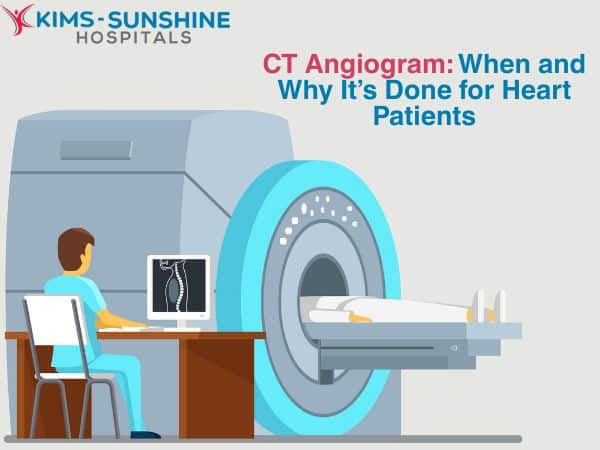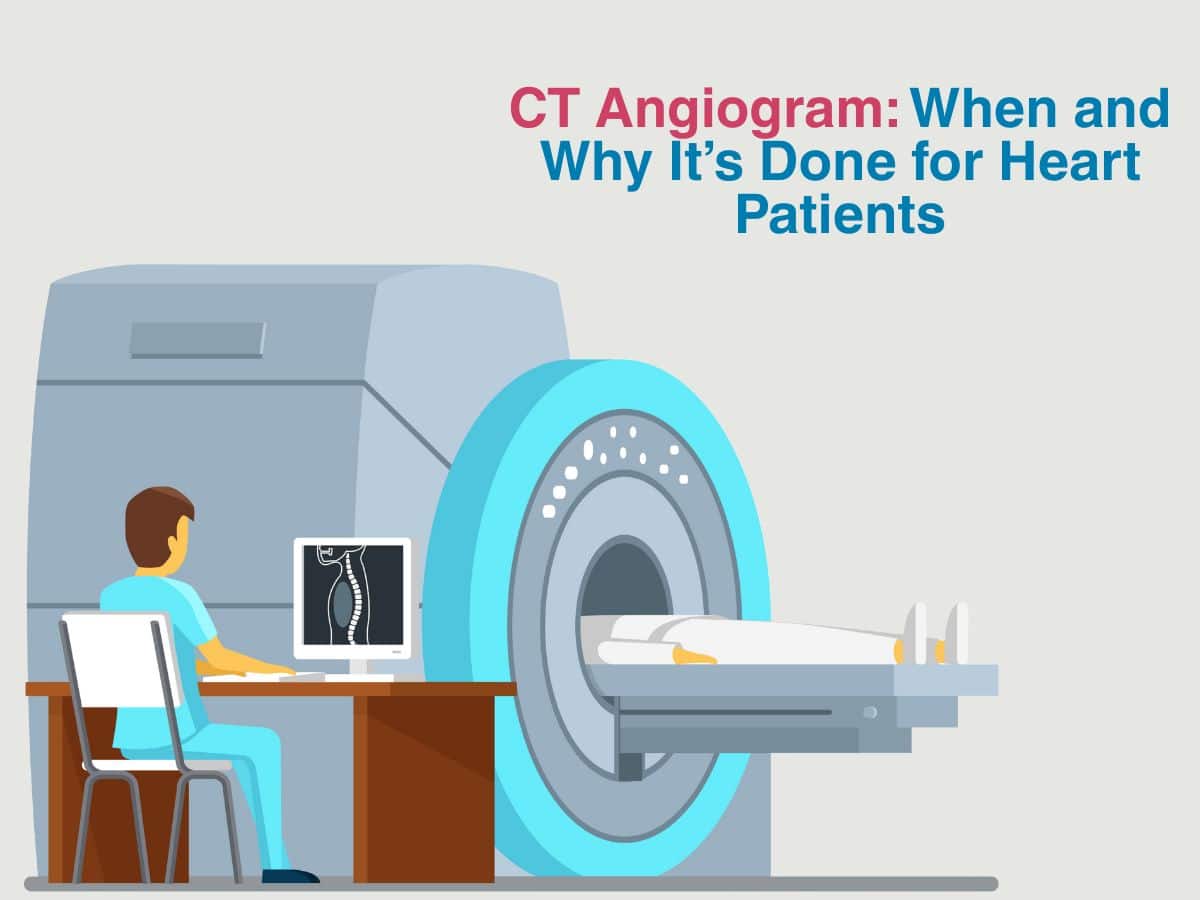
CT Angiogram: When and Why It’s Done for Heart Patients
 A CTA or Computed Tomography Angiogram is an imaging technique that is used to visualise the heart, all the blood vessels and other tissue in great detail, with the help of a contrast dye or agent that is injected into the bloodstream. Angiography can be done in a few different ways- X-rays, MRI or with CT imaging respectively. The way the contrast agent flows in the blood vessels and surrounding tissue is what is captured in high resolution.
A CTA or Computed Tomography Angiogram is an imaging technique that is used to visualise the heart, all the blood vessels and other tissue in great detail, with the help of a contrast dye or agent that is injected into the bloodstream. Angiography can be done in a few different ways- X-rays, MRI or with CT imaging respectively. The way the contrast agent flows in the blood vessels and surrounding tissue is what is captured in high resolution.
What Does A Cardiac CT Angiogram Detect?
A CTA is incredibly useful for imaging the organs and blood vessels in great detail. Examples include the neck, brain, heart, chest, abdomen, pelvis, arms or hands and legs or feet too. The CTA is used to help detect any issues with circulation that may occur in the form of aneurysms, blood clots, blocked blood vessels, vascular malformations, congenital heart defects, injured blood vessels or if a blood vessel has ruptured or torn. It is also used to check for stenosis, pulmonary embolisms, or can serve as an add on during surgery- so that surgeons can visualise the part of the body and then insert the stent or anything else that needs to be done.
When Is A CT Angiogram Done For Heart Patients?
It is a non-invasive technique that can help detect any blockages, congenital heart defects or if a stent or pacemaker needs to be inserted – the anatomy can be mapped in great detail so that placement of the device is accurate. With the use of the contrast material, blood vessels show up as a bright white in images, making it easier for the physician to understand what is going on inside the body.
How To Prepare For A CT Coronary Angiogram?
You will undergo a detailed physical examination. The doctor will ask you beforehand if you are allergic to the contrast agent used and will give medications if necessary. Then on the day of the procedure, the contrast dye will be injected into a blood vessel in your arm via an IV catheter. Then, you will be asked to lay very still, so that clear images can be taken. A radiologist will take the images and then check them and give the results to your doctor. You may stay in the test room for 30-60 minutes. After that, you will be monitored for a while to see if your body is able to flush the dye out without any issue and to check if you develop any allergies. You will need to fast for a few hours (at least 12), unless you are diabetic, in which case a light snack may be fine.
Conclusion
The use of CTA as a non-invasive imaging technique is a boon for many people in general. But, if you have been allergic to the dye or if your kidney is not able to process it due to kidney disease, then you may be asked to get imaging done using another method. A CT Angiogram is a very useful tool in many different ways, but it is NOT used on pregnant women as it may be dangerous for the foetus. Talk to your doctor if you have any questions as they will be able to help you and explain everything in detail. Lastly, don’t worry too much as a CTA is just another diagnostic tool which is designed to help you.






